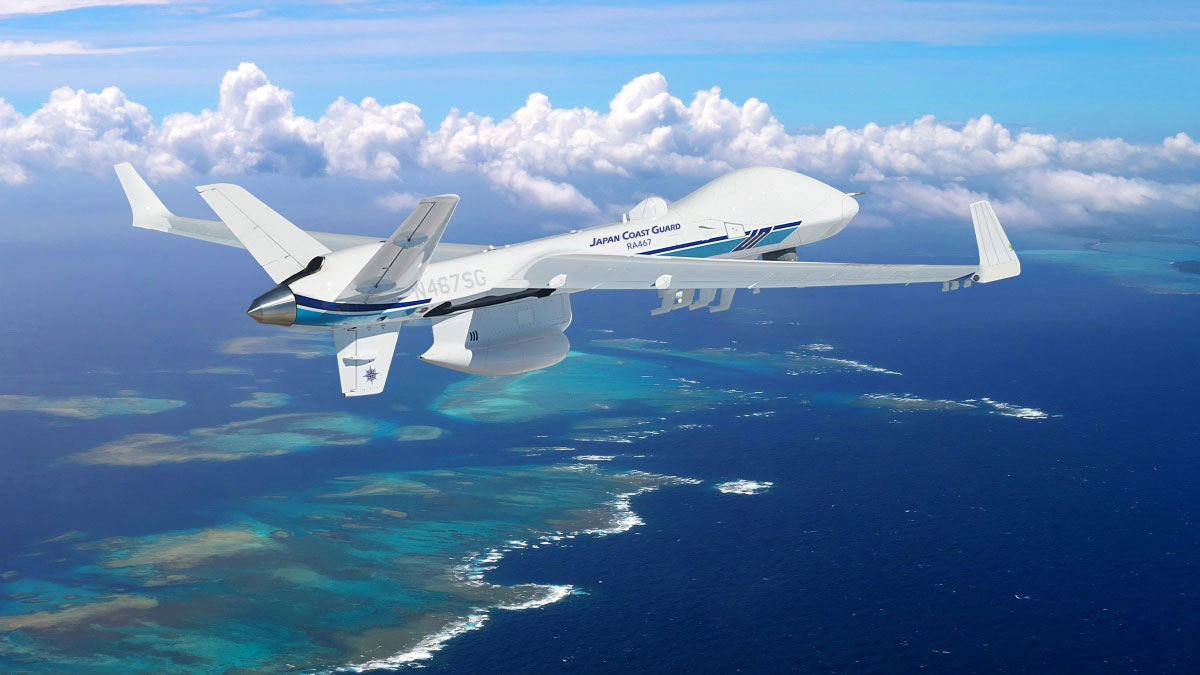Asia Pacific's Leading Naval Defence And Maritime Security Show >
Newsbyte >
Japan Coast Guard begins operating SeaGuardian for maritime surveillance
Japan Coast Guard begins operating SeaGuardian for maritime surveillance
Japan Coast Guard begins operating SeaGuardian for maritime surveillance
INDUSTRY WATCH | 15 OCTOBER 2022
 GA-ASI | JCG SeaGuardian - The Japan Coast Guard has started operating the MQ-9B SeaGuardian to help monitor waters around the island nation. |
|---|
The Japan Coast Guard (JCG) has commenced flight operations with its new MQ-9B SeaGuardian MALE UAV platform. An inaugural flight on 19 October allowed personnel to check the performance of the aircraft and its sensors.
General Atomics Aeronautical Systems (GA-ASI) announced that the UAV is operating from the Japan Maritime Self-Defense Force’s (JMSDF) Hachinohe Air Base, situated in northern Honshu.
SeaGuardians will principally be conducting maritime wide-area searches over the Sea of Japan – especially the Yamatotai Bank west of Japan that is routinely subject to illegal fishing by foreign boats – and the Pacific Ocean.
Other duties for Japanese SeaGuardians will be search and rescue, disaster response and maritime law enforcement. Japan has the world’s sixth largest EEZ.
An accompanying photo released by GA-ASI showed a white- and blue-painted aircraft still bearing the US civil registration N467SG. It also bore the livery of the JCG.
Robert Schoeffling, VP of International Strategic Development at GA-ASI, commented: ‘SeaGuardian is the world’s premier asset for performing maritime wide-area searches. We’re proud to support the government of Japan’s policy to strengthen its maritime security.’
Japanese SeaGuardians feature a multi-mode maritime surface search radar with an inverse synthetic aperture radar imaging mode, an EO/IR sensor plus a high-definition full-motion video sensor and an Automatic Identification System.
The deal with the JCG was publicised by the OEM on 6 April, and at that time it correctly promised that operations would begin in October.
However, there has been no mention of how many MQ-9Bs the JCG ordered, or how much the contract was worth. It is not even explicit whether the JCG is leasing the aircraft or has purchased them. Given the rapid fulfilment of the contract, the former may be more likely.
The JCG had earlier witnessed a GA-ASI demonstration of the SeaGuardian from Hachinohe in the period from 15 October to 10 November 2020. It did so in 2018 as well.
In related news, the USAF will deploy MQ-9 Reapers to Japan for the first time in late October.
Eight aircraft will temporarily operate from the JMSDF’s Kanoya Air Base in Kagoshima Prefecture, their task being to perform maritime intelligence collection primarily over the East China Sea.
The Japanese MoD noted: ‘Japan and the US mutually confirmed that the deployment period is one year starting from the initiation of the US MQ-9 operation for intelligence collection.’ Some 150-200 USAF personnel will accompany the Reaper detachment.
This move represents the most significant basing of American UAVs in Japan to date.
The location of Kanoya, the southernmost air base on mainland Japan, will allow easy access to the East China Sea and Japan’s southwest archipelago, where intrusions by Chinese fishing boats and coast guard craft run rampant.
According to officials, the two countries will ‘jointly analyse information acquired by Japanese and US assets, including MQ-9s’. North Korean activities in nearby waters will probably also be of interest.
By: Gordon Arthur / Christchurch
Article | Shephard Media
